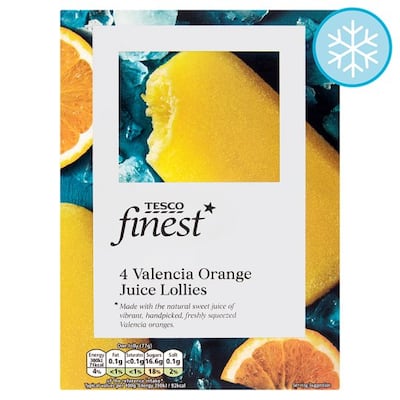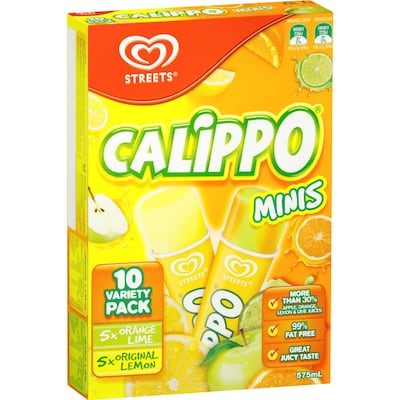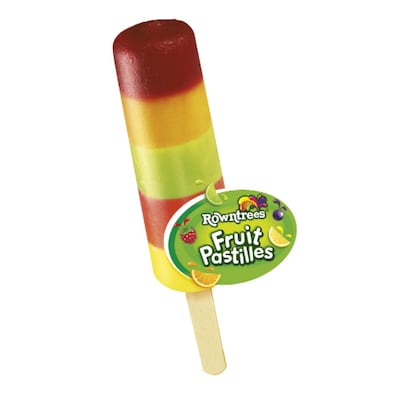Making a habit of examining food packaging can turn one from a sceptic into a full-blown cynic. So I was delighted to discover a product that seems to be as enticing when you read the back as it is when you look at the front.
Popsicle brand Wellnice is making treats that have little more than fruit and vegetables, yet taste like summer on a stick.
Wellnice declares on the front of the packet that its Two Carat Diamond carrot, orange and ginger stick is “100 per cent Irish”, which is surprising given the oranges are probably not grown here. But let’s not quibble as a young Irish duo makes the lollies in Limerick with ingredients sourced by Keelings, the Irish fruit supplier. Yes, but are the popsicles any good – in both senses of the word? The answer seems to be yes.
Turn the packet over and you will see the words “no added sugar”, “no added water” and “vegan friendly”. No added sugar is often code for “contains more of other types of sweeteners” but not in this instance. The list of ingredients is simply: carrot 49 per cent, orange and ginger. On the back, it also says “cold-pressed vegetable and fruit ice pops”. This is a bonus for those who believe cold-pressed juices retain more nutrition. It also says it is high in vitamin C and vitamin A.
So far, so good.

It also says on the Two Carat Diamond packet “23 calories per 80ml”. Normally, this is the bit where I get annoyed trying to work out the number of calories in a normal serving. But no, Wellnice has done the work for me. A Two Carat Diamond lolly is 80ml and has 23 calories. Simple.
Other flavours have different calorie counts, depending on which fruit and vegetables are used. The Lemon Sucker at 15 calories contains lemon, pineapple and yellow pepper and provides 88 per cent of the recommended daily intake of vitamin C.
These are very different from standard ice pops.
Marks & Spencer’s Valencia Orange Juice Lollies, which are another good option, are smaller, but each one has 68 calories. That’s because it is made up of “freshly squeezed” orange juice (87 per cent) and sugar. That added sugar makes all the difference. Funnily enough, Tesco’s Finest Freshly Squeezed Valencia Orange Juice Lollies also have 87 per cent “freshly squeezed Valencia orange juice” and sugar.
Less appealing
Other similar lollies are a lot less appealing. The Calippo Mini Orange Popsicle, which is made by behemoth Unilever, has just 20 per cent orange juice and that is from concentrate. It also has three types of sugar.

The ingredients are: water, sugar, glucose syrup, apple juice from concentrate (5 per cent), fructose syrup, acidity regulator, citric acid, stabilisers (locust bean gum and tara gum), colours (paprika extract and curcumin) and flavouring.
Despite the name, locust bean gum has nothing to do with the hungry grasshoppers of the same name. It is derived from the bean of the carob or locust bean tree, which grows on the Mediterranean. Carob powder, made from carob beans, is often used by the health conscious as a substitute for cocoa powder. The gum is obtained in a process that uses acid and heat. Tara gum is similar and comes from the Peruvian carob. It was reviewed by the European Food Safety Authority last year and found not to be a cause for concern. These two work well together, giving good viscosity. The last ingredient is the mystery “flavouring”. It is interesting that the popsicles without additives did not need added flavouring to taste good.
Funnily enough, Rowntree’s Fruit Pastille Lollies have very similar ingredients, including three types of sugar. They contain water, fruit juice from concentrate (25 per cent – pineapple, orange, lemon, raspberry, blackcurrant) sugar, glucose syrup, citric acid, stabilisers (guar gum, sodium alginate, carrageenan) flavourings, colours (beetroot red, annatto, curcumin, copper complexes of chlorophyllins) and dextrose.

Annatto is a orangey-red colourant derived from the seeds of the achiote shrub. Curcumin is the spice turmeric. Copper complexes of chlorophyllins, aka E141(i), adds a green colour.
These cheaper packets boast “no artificial colours, flavours or additives” but that does not mean they are health foods. Sugar, for example, is not artificial but it’s still not advisable to get too much, especially in the form of fructose syrup.
So what’s the catch with Wellnice. Well, the price is not as nice. They cost about twice as much as the others, but then you are getting a much better product. So Wellnice are top of the pops for me.
FOOD LABELS SERIES
1) Being a successful shopper
2) Bread
3) Milk
4) Cereal
5) Rashers
6) Yoghurt
7) Soup
8) Hummus
9) Pasta sauce
10) Chinese ready meals
11) Frozen chips
12) Chilled fish
13) Egg
14) Chicken Kiev
15) Crisps
16) Mayonnaise
17) Baked beans
18) Tomato ketchup
19) Chocolate digestive biscuits
20) Avocados
21) Cadbury's Dairy Milk
22) Dark chocolate
23) Salad Cream
24) Pesto sauce
25) Smoothies
26) Sliced ham
27) Vanilla ice cream
28) Ice-pop
29) Jaffa cakes
30) Protein bars
31) Energy bars
32) Chicken Tikka Masala
33) MiWadi
34) Peanut butter












